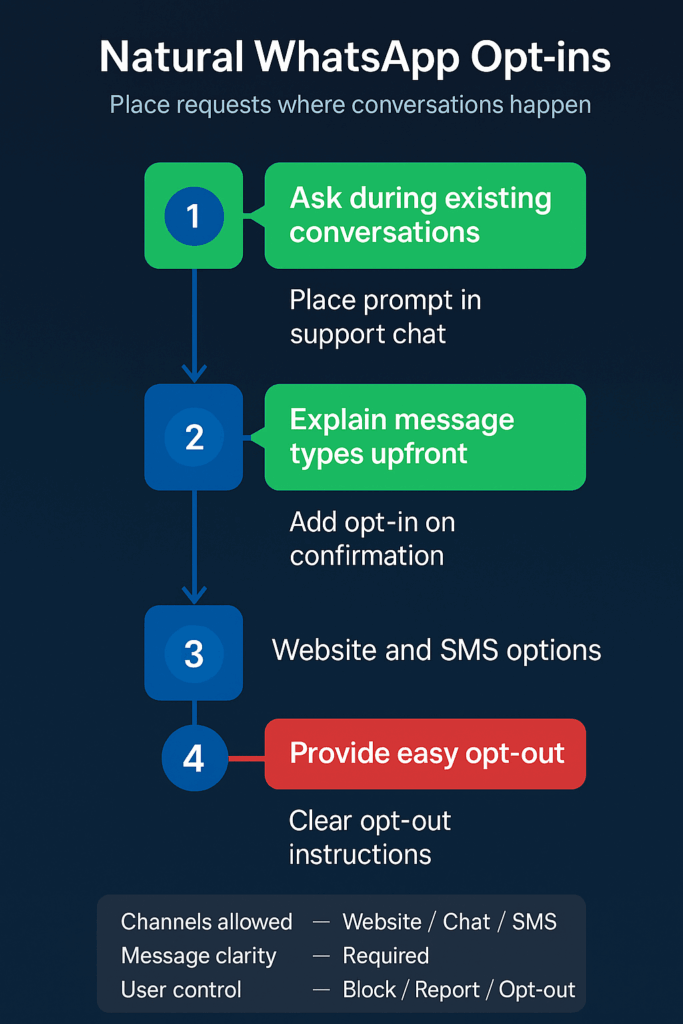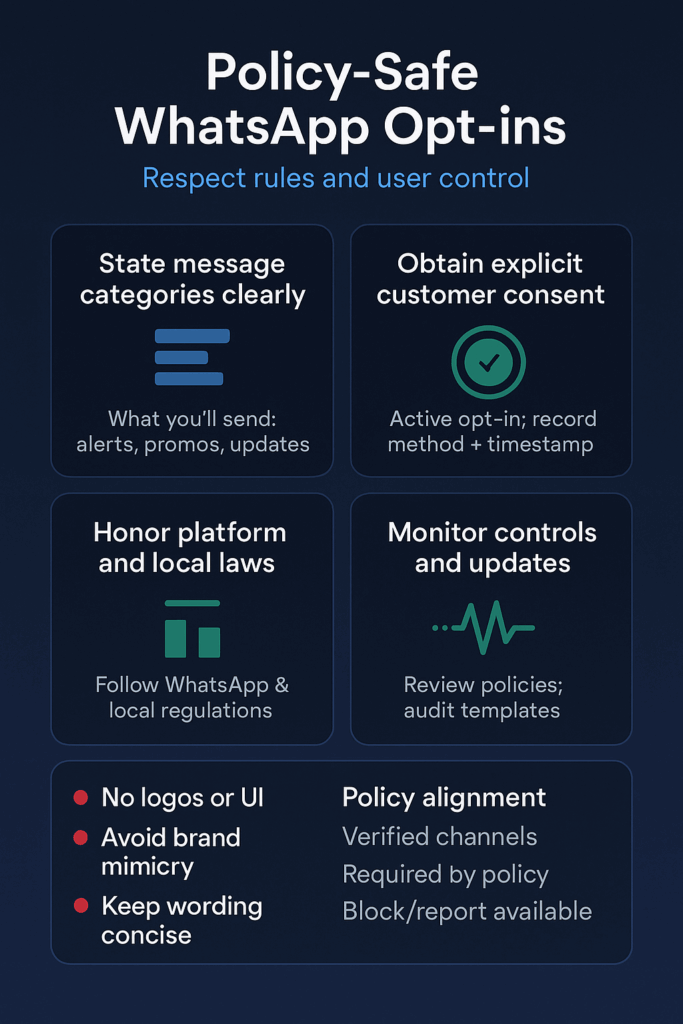Your WhatsApp marketing list sits empty while customers slip away to competitors who stay in touch. The solution isn’t complicated—ask for permission where you already connect with people. Smart timing makes all the difference.
What WhatsApp Opt-in Really Means
A WhatsApp opt-in is explicit permission from a customer to receive business messages on the platform. According to WhatsApp’s official policy, you can collect these permissions through your website, during chats, or via SMS, as long as you follow local laws.
Think of it as raising your hand in a crowded room. Your customer actively says “yes, I want to hear from you.” Without this clear signal, you’re just another unwanted message in their inbox.
If you’re new to WhatsApp as a marketing tool, check out our guide on WhatsApp Automation 101 to see how opt-ins fit into a broader automation strategy.
Why Natural Opt-ins Beat Pushy Pop-ups

Customers hate being interrupted by random opt-in requests. But they’re open to staying connected when the timing feels right. A support chat that ends well or a successful purchase creates the perfect moment to ask.
Your business loses potential revenue every day customers forget about you. Email gets buried. Phone calls feel intrusive. WhatsApp sits right where people check messages dozens of times daily.
The platform gives users tools to block and report businesses that send unwanted messages. One wrong move and your account faces restrictions. Building your list the right way protects your marketing channel for the long term.

Three Ways to Start Building Your List Today
Add opt-ins to high-traffic touchpoints. Your contact forms and order confirmation pages already have customer attention. Add a simple checkbox with clear text like “Get order updates and offers on WhatsApp.” According to WhatsApp’s requirements, you must clearly state what kind of messages a person is agreeing to receive before they opt in.
Train your support team to ask at the right moment. When a customer service chat ends positively, your team member can say: “Glad I could help! Can I add you to our WhatsApp list for future updates?” The customer feels good about your service and sees value in staying connected.
Create simple messaging rules for your team. Define what you’ll send and how often before you start collecting opt-ins. Will you share order status updates? New product alerts? Limit frequency to twice a week maximum. Consistency builds trust and reduces complaints.
If you’re planning to automate these follow-ups, our article on WhatsApp Automation 101 shows you how to streamline the process without losing the human touch.

Watch These Signals to Track Your Success
Opt-in rate from different sources. Monitor which touchpoints generate the most permissions. Your checkout page might outperform your newsletter signup by ten to one.
Message open rates after opt-in. High engagement means you’re delivering value. Low engagement suggests you need better message timing or content.
Customer complaints or blocks. Track these closely. WhatsApp provides users with tools to control message opt-ins, including the ability to block and report businesses. Rising complaints signal you need to adjust your approach.
Revenue from WhatsApp conversations. Connect opt-ins to actual sales. A growing list means nothing if it doesn’t drive business results.
Time between opt-in and first purchase. Fast conversions indicate strong interest. Slow conversions might mean you need better follow-up messages.

Essential Safeguards to Protect Your Account
Always get active consent. Customers must actively check a box or say yes. You cannot message them just because you have their phone number. Users can easily block or report businesses for sending unwanted messages, which can affect your account.
Provide clear opt-out instructions. WhatsApp requires that businesses give customers clear instructions on how they can opt out of receiving messages. Make it easy to unsubscribe and honor requests immediately.
Follow local data privacy laws. Data privacy rules vary by country, so make sure your opt-in method complies with local laws. When in doubt, consult legal counsel rather than risk violations.

The Cost of Waiting
Your competitors are already building their WhatsApp lists while you debate the best approach. Every day without a strategy means missed connections with customers who want to hear from you.
Meta is giving users more control over business chats while making the rules for companies more strict. The platform continues tightening policies around business messaging. Starting with compliant opt-in practices now positions you ahead of businesses that will struggle to adapt later.
The customers who trust you enough to share their phone number become your most valuable marketing asset. They’ve already shown interest in your business. Your job is asking for permission at moments when saying yes feels natural.



Leave a Reply